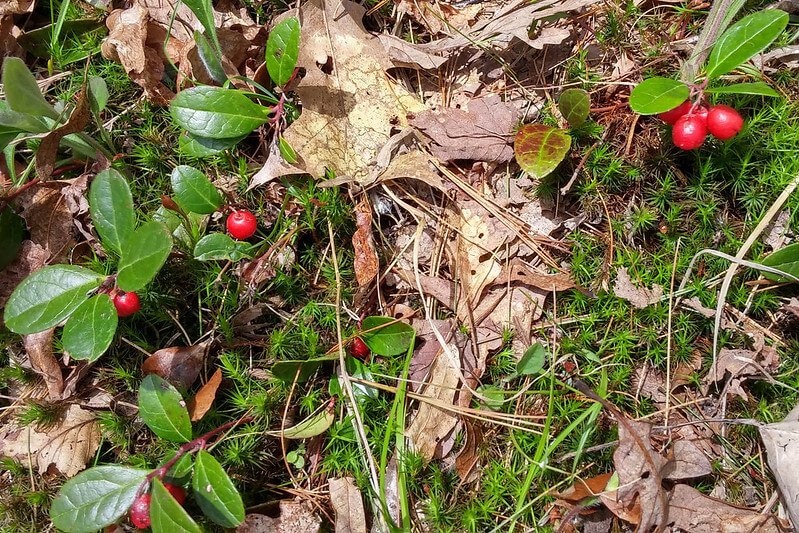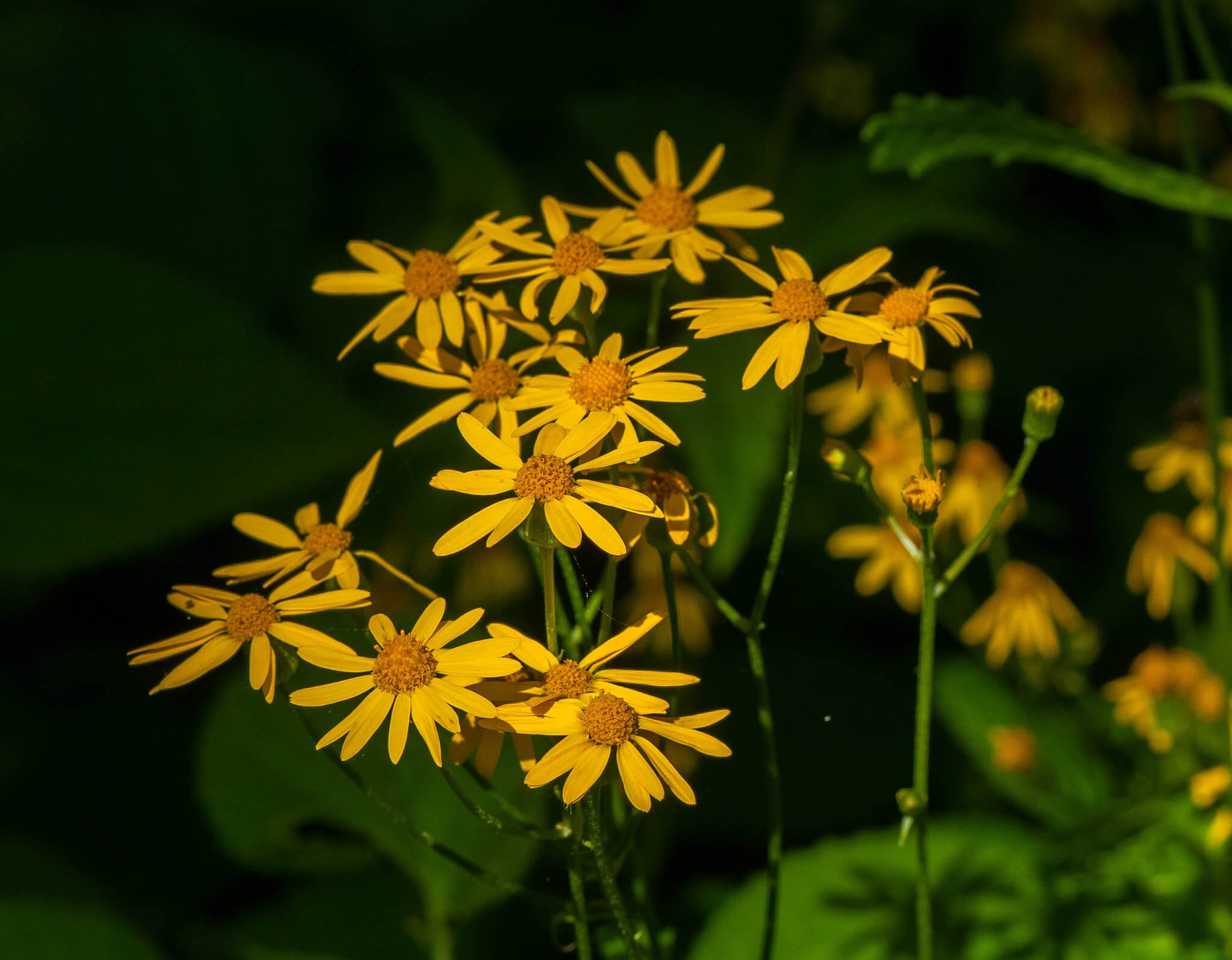Wingstem (Verbesina alternifolia)
Wingstem flowers are visited by many native bees, butterflies, and skippers (illinoiswildflower.info). It is the host plant to the Pearl Crescent, Silvery Checkerspot, Harris Checkerspot, and 13 other species of butterflies and moths in our area (nwf.org), including the threatened Gold Moth (mnfi.anr.msu.edu). It is also recommended as a preferred pollinator plant by the Xerces Society (Xerces.org). The bitterness of its leaves makes this plant deer-resistant and other mammalian herbivores do not seem to bother it. It may spread readily by seed and rhizomes to take over an area in the right conditions, thus it may not be suitable for small plantings.
Photo credit Fritz Reynolds (1) John Blair (2)
Wingstem flowers are visited by many native bees, butterflies, and skippers (illinoiswildflower.info). It is the host plant to the Pearl Crescent, Silvery Checkerspot, Harris Checkerspot, and 13 other species of butterflies and moths in our area (nwf.org), including the threatened Gold Moth (mnfi.anr.msu.edu). It is also recommended as a preferred pollinator plant by the Xerces Society (Xerces.org). The bitterness of its leaves makes this plant deer-resistant and other mammalian herbivores do not seem to bother it. It may spread readily by seed and rhizomes to take over an area in the right conditions, thus it may not be suitable for small plantings.
Photo credit Fritz Reynolds (1) John Blair (2)
Wingstem flowers are visited by many native bees, butterflies, and skippers (illinoiswildflower.info). It is the host plant to the Pearl Crescent, Silvery Checkerspot, Harris Checkerspot, and 13 other species of butterflies and moths in our area (nwf.org), including the threatened Gold Moth (mnfi.anr.msu.edu). It is also recommended as a preferred pollinator plant by the Xerces Society (Xerces.org). The bitterness of its leaves makes this plant deer-resistant and other mammalian herbivores do not seem to bother it. It may spread readily by seed and rhizomes to take over an area in the right conditions, thus it may not be suitable for small plantings.
Photo credit Fritz Reynolds (1) John Blair (2)
Life Cycle: Perennial
Sun Exposure: Partial sun, light shade
Soil Moisture: Medium-Wet, Medium
Height: 3-8 feet
Plant Spacing: 1.5-2 feet
Bloom Time: July-October
Bloom Color: Yellow
Advantages: Pollinator Favorite, Deer Resistant, Recommended, but can be vigorous
Host Plant: Pearl Crescent, Silvery Checkerspot, Harris Checkerspot, Baltimore Checkerspot, and 13 other species of butterflies and moths use this as a caterpillar host plant in our area (nwf.org)
Specialist Bee: Perdita albipennis, Melissodes agilis, M. boltoniae, M. coreopsis, M. dentventris, M. druriellus, M. illatus, M. menuachus, M. tinctus, M. trinodis, M. wheeleri, Svastra petulca, Dieunomia heteropoda, D. nevadensis, Paranthidium jugatorium, Megachile inimical, M. parallela, and Ashmeadiella bucconis.
Beneficial for Endangered or Threatened Species: Gold Moth (Basilodes pepita) (mnfi.anr.msu.edu)
Complementary Plants: Tall Ironweed, Boneset, Cup Plant, Joe-Pye Weed
Resources: Johnson, Lorraine, and Sheila Colla. A Northern Gardener’s Guide to Native Plants and Pollinators: Creating Habitat in the Northeast, Great Lakes, and Upper Midwest. Island Press, 2023







